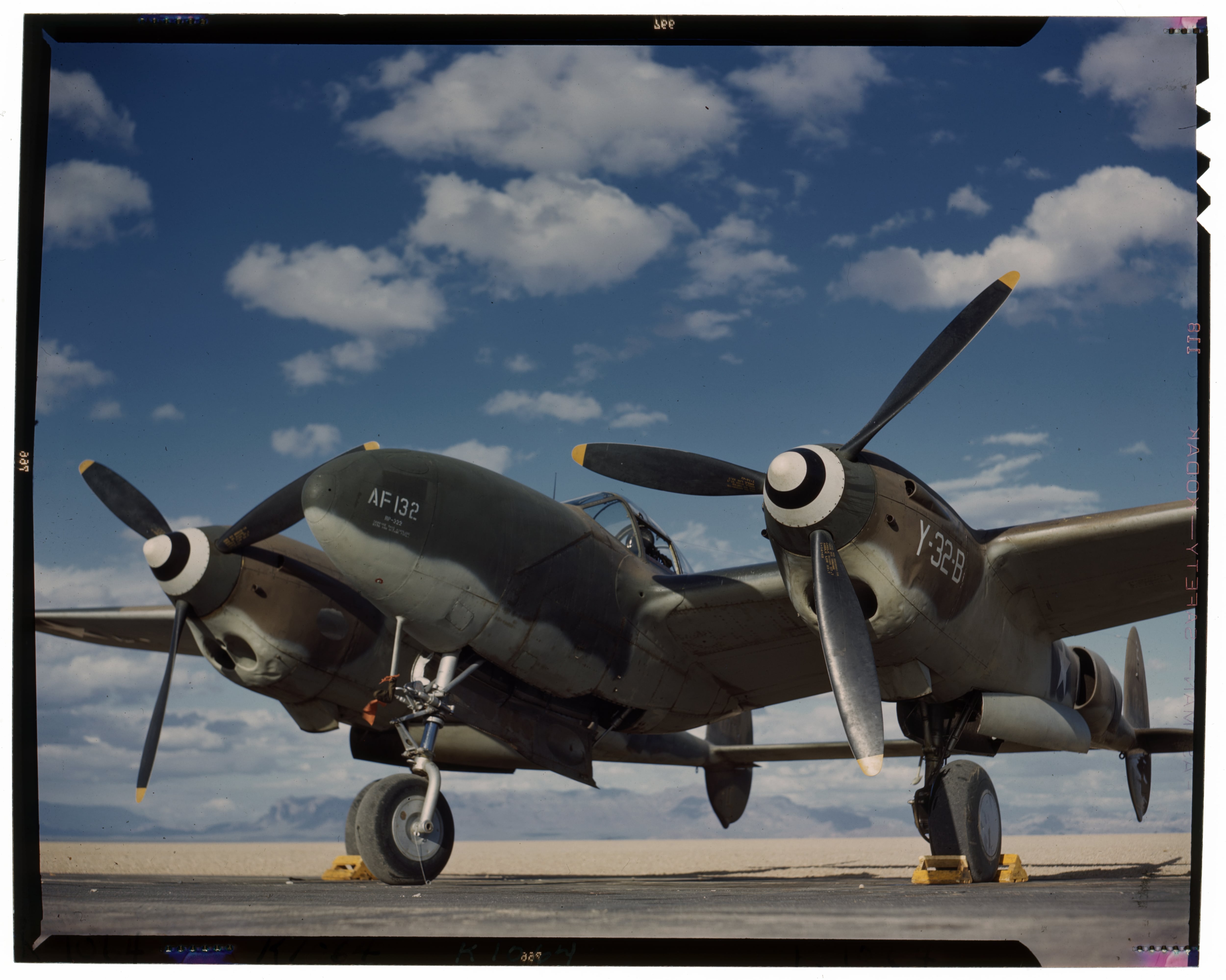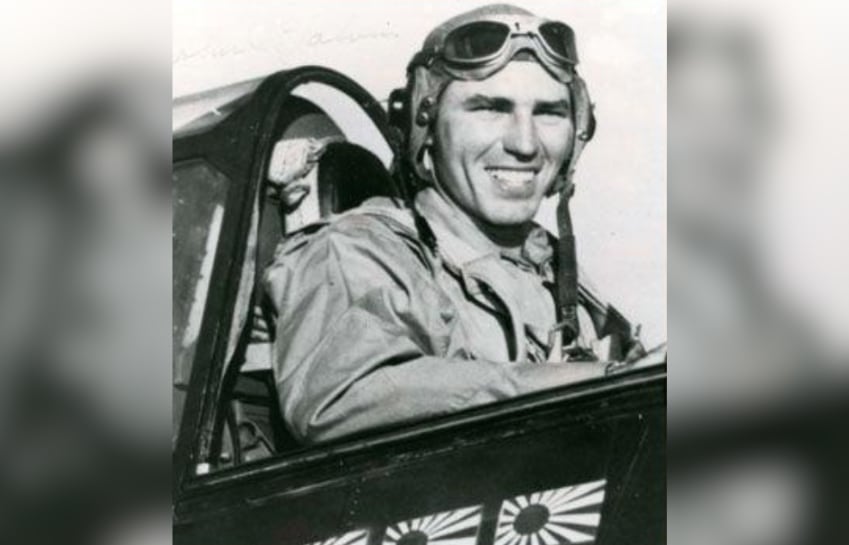On Dec. 2, 2024, Perry Dahl, one of the last living American WWII aces who shot down five or more enemy aircraft, died after a storied 37-year career in the United States Army, Army Air Corps, U.S. Army Air Forces and U.S. Air Force. He was 101 years old.
Dahl was born on Feb. 18, 1923, in North Battleford in Saskatchewan, Canada. Shortly after, his family moved to the United States, settling in Seattle.
After three years in high school, he enlisted in the Washington National Guard on June 17, 1940, and three months later, he entered service as a private with the 41st Infantry Division. On Sept. 26, 1942, Dahl enrolled in the Aviation Cadet Program, and on June 22, 1943, he qualified as a pilot and a second lieutenant.
RELATED
After further training on the Lockheed P-38 Lighting, he was assigned to the 55th Fighter Group in Tumwater, Washington, before being reassigned to the 432nd Squadron of the 475th Fighter Group, based at north Borio Airfield, Dobodura, in Papua New Guinea, where he nicknamed his Lightning “Skidoo.”
Dahl wasted little time getting underway.
While escorting North American B-25s on a bombing mission to Alexishafen, he was credited with shooting down a Zeke, the Allied codename for the Mitsubishi A6M3 Zero fighter.
The Japanese navy was not active in New Guinea at that time, however, and Dahl’s victim was more likely a Nakajima Ki-43 fighter, known as an Oscar. The same could be said of the Zeke credited to him over Wewak on Dec. 22; that discrepancy seems to have been resolved a month later when Dahl was credited with shooting an Oscar over Wewak.
On Jan. 23, 1944, Dahl was wingman to Capt. John Loisel when he downed two Oscars over Cape Moem. Loisel then came under attack himself, but Dahl radioed a warning and then shot the Oscar off his tail.
A month later, Dahl’s squadron departed Nadzab to escort B-25s and Douglas A-20s to the Japanese airbase at Momote, but bad weather forced them to abort. As he landed at Cape Gloucester, Dahl collided with a B-24 but survived.
On April 3, Dahl was credited with shooting down two Oscars of the 11 planes claimed by his group that day. The double victory made him an ace, and the month also saw him promoted to captain. On June 8, he downed another Oscar between Wakde airfield and Manokwari.
Five months later, Dahl was flying a new P-38L7 when he downed a Kawasaki Ki-61 Tony over San Pablo, Leyte, on Nov. 10. As he turned to make a second attack, however, his plane collided with his wingman, 2nd Lt. Grady Lasseter Jr., who was killed.
Dahl bailed out, only to be captured by a Japanese patrol and later rescued by Philippine Resistance fighters. He rejoined his squadron on Jan. 15, 1945, and on March 5, he shot down a Mitsubishi Ki-21 bomber down near Formosa, now Taiwan.

On March 28, Loisel was leading 19 P-38Ls to meet and escort B-25s against Japanese shipping in the Ban Gai area off French Indochina. They failed to rendezvous with the bombers but found plenty of Japanese fighters, one of which Loisel sent crashing into the sea south of Tre Island for his 11th and final victory.
Dahl and his eight P-38s arrived early at the rendezvous point and spent the next 45 minutes searching for the enemy convoy. Once spotted, Dahl descended and circled it at the risk of being hit by AA fire. He then relayed its position to the B-25s.
“Shortly afterwards,” Dahl’s citation recounted, “he noticed that an accompanying flight of P-38s, their pilots apparently unaware of some 20 enemy [aircraft] above, was attacking a few hostile planes at low altitude. Unable to communicate with the endangered flight, he pulled up to intercept the enemy as they dived to attack it.”
The 475th claimed a total of nine enemy aircraft in that 20-minute melee, including a Hamp, or a Mitsubishi A6M3 Model 32, credited to Dahl for his final victory.
As Dahl left the target area, he was attacked by six more Japanese fighters. After shaking them off, he discovered that his fuel was too low to reach his base, so he landed at another American airfield, with 10 to 20 gallons of fuel reserve left.
For his actions on March 28, Dahl was awarded the Silver Star.
RELATED

After the war, Dahl entered the U.S. Army Air Forces Reserve and completed his Bachelor of Science studies at Washington State University and Southern Colorado State University. He then worked for a short time at the Seattle Post-Intelligencer until the Korean War broke out on June 25, 1950.
He was consequently called back to active duty on Feb. 16, 1951, serving at Kelly Air Force Base, Texas, to September of that year and Châteauroux Déols, France, until June 1954.
From then on, Dahl served in a succession of staff positions and rose to the rank of colonel. From July 1966 through June 1970, he served on the Air Force staff at the Pentagon, then went to Vietnam as commander of the 19th Tactical Air Support Squadron at Bien Hoa Air Base until June 1971.
After service as deputy commandant of cadets and vice commandant of cadets at the U.S Air Force Academy, Dahl did a second tour of duty in Southeast Asia as commander of the 56th Special Operations Wing at Nakhan Phanom Royal Thai Airfield from July 1974 to April 1975.
He then served as deputy chief of staff for plans and programs in North American Aerospace Defense Command from April 1975 to June 30, 1978, when he retired with the Legion of Merit.
Dahl left the Air Force with the Distinguished Bronze Star, Meritorious Service Medal with oak leaf cluster, Air Medal with three oak leaves and Air Force Commendation Medal, among other awards. In 2015, he was among the surviving aces to receive the Congressional Gold Medal.
In his final years, Dahl was honored by the color scheme of his Skidoo being applied to the restored Lighting at the Planes of Fame Museum in Chino, California. It currently flies at air shows with the Air Force Heritage Flight Foundation.
Read the full article here
